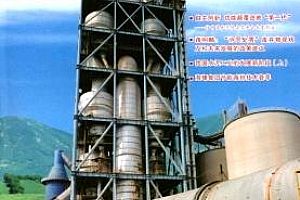

According to data released recently by the Bureau of Statistics of China, the total profit of China's cement industry in 2017 reached 87.7 billion yuan, an increase of 94.41% over the same period of last year and the total profit achieved the second historic profit country. China's cement industry generally believes that the annual cement prices remain high, the off-season is not short. The overall trend of prosperity season boosted the industry.
After tasted the sweetness of high cement prices, in 2018, the cement industry summed up the past, looking forward to what action it will take? The author believes that based on the current status of excess capacity and the cement industry's market demand stability, in 2018 in the following areas, the cement industry will have a new consensus.
In the context of mergers and acquisitions, cement grinding station business living space is small
Last June, when I visited the cement market in Jiangxi Province of China, I learned from some of the local grinding stations that local clinker companies are squeezing the living space of the grinding station, leading to the survival of the grinding station. In fact, compared with Jiangxi, from 2016 onwards, as China gradually enters the age of clinker control marketing, it has risen gradually over the past two years. The industry believes that the future suppression of clinker production station downstream grinding station will enter the normalization of slag grinding station production space will be further compressed, or even withdraw from the stage of history.
The so-called control era, some industry experts said clinker system that clinker sales and terminal sales price (sold to whom) price. The main reason is the clinker production cuts stagnate, the pressure on business inventories greatly reduced. For example, in April 2017, Northern clinker inventories also fell about 1% to 2% below previous levels. The northern peak also greatly reduced the pressure on the southern market. Coupled with the peak output during the Spring Festival such as the southern market, the summer high temperature and the rainy season, the clinker production in the southern market also shows a gradual decrease trend.
Another reason is that large Chinese cement companies have increased the personal use of clinker and have gradually reduced their exports, while high concentrations have increased their supply controls. At present, China's clinker clinker manufacturers top 10% of the country's 61%. Large enterprises have more control over clinker than cement. With the gradual formation of consensus, the proportion of export clinker will undoubtedly decline. Since the beginning of this year, clinker prices in many areas have been upside down from cement prices (that is, clinker prices are higher than cement prices), which is the most effective example. In particular, the business in East China is even more obvious. In addition, large-scale cement enterprises such as Conch Cement are stepping up capacity-building of their own mill systems, which will undoubtedly reduce the export volume of clinker.
In addition, large cement companies like China Conch Cement are stepping up their efforts to increase the capacity of grinding stations in the system, which will undoubtedly reduce clinker exports. Cancellation of 32.5 cement also further increased the difficulty of grinding station survival. This move will greatly reduce production flexibility, increase production costs and reduce the profit margin at Mulib Station.
Enterprises are expected to strengthen competition and cooperation
As far as competing companies are concerned, I think the competition between enterprises in the future will be more orderly. A few years ago, the domestic cement industry was in a high-speed development stage with a domestic demand of 2 cement and a low degree of concentration. The competition between enterprises is very fierce. However, from Waterloo in the cement industry in 2015, the fierce competition began to change. Due to the marked decline in demand and the worsening of overcapacity, enterprises in all regions started to actively seek new competition and cooperation. The orderly competition of enterprises continues to be put forward. Domestic cement price recovery in 2016 is the result of orderly competition.
Into 2017, corporate tastes tend to be more orderly competition. As a result, several relevant meetings were held in the industry, such as the 6th meeting of CJC-JJJ in August 2017. At the meeting to deepen the reform and deepen the cement industry in four provinces to reach a consensus.





